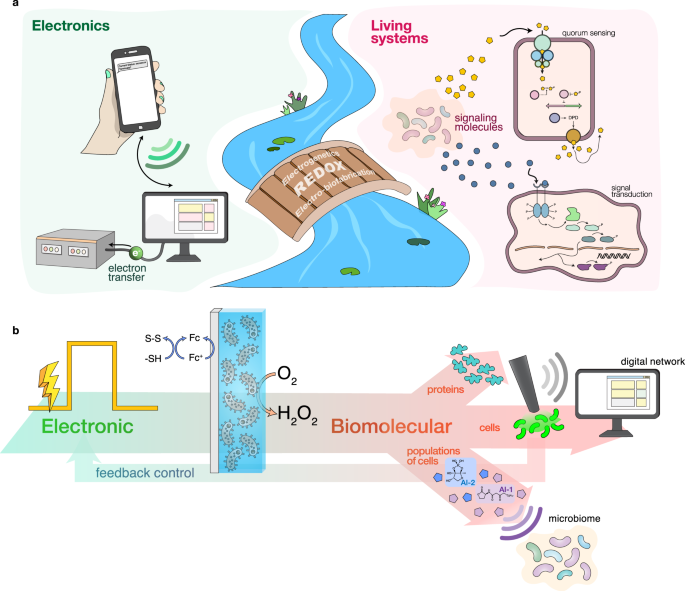Phys.org March 5, 2024
Microelectronic devices can directly communicate with biology, as electronic information can be transmitted via redox reactions within biological systems. Researchers at the University of Maryland engineered biology’s native redox networks to enable electronic interrogation and control of biological systems at several hierarchical levels: proteins, cells, and cell consortia. Electro-biofabrication facilitated on-device biological component assembly, electrode-actuated redox data transmission and redox-linked synthetic biology allowed programming of enzyme activity and closed-loop electrogenetic control of cellular function. Horseradish peroxidase was assembled onto interdigitated electrodes where electrode-generated hydrogen peroxide controlled its activity. E. coli’s stress response regulon, oxyRS, was rewired to enable algorithm-based feedback control of gene expression, including an eCRISPR module that switched cell-cell quorum sensing communication from one autoinducer to another—created an electronically controlled ‘bilingual’ cell. The disparate redox-guided devices were wirelessly connected, enabling real-time communication and user-based control. According to the researchers these methodologies would help to better understand and develop sophisticated control for biology… read more. Open Access TECHNICAL ARTICLE

Bridging electronic and biomolecular communication through redox. Credit: Nature Communications volume 14, Article number: 8514 (2023)